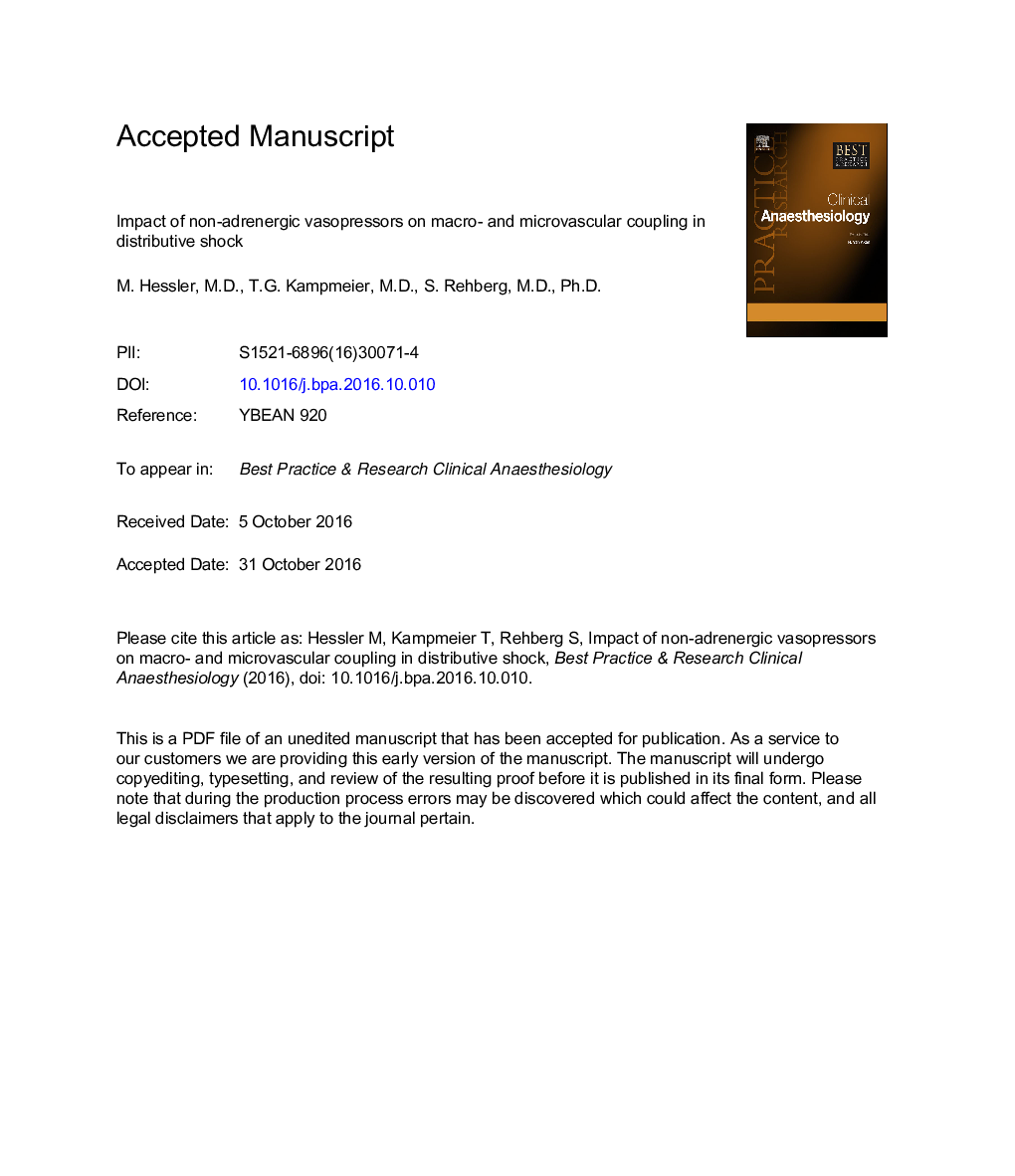| Article ID | Journal | Published Year | Pages | File Type |
|---|---|---|---|---|
| 8610951 | Best Practice & Research Clinical Anaesthesiology | 2016 | 34 Pages |
Abstract
The present review initially describes the rationale for the use of non-adrenergic vasopressors in the treatment of distributive shock and then provides an overview of the individual vasopressin-receptor agonists, namely arginine vasopressin, terlipressin, and selepressin. Following a brief summary of their current use in clinical practice, the present review focuses on the influence of vasopressin-receptor agonists on macro- and microvascular coupling, also referred to as hemodynamic coherence. On the basis of the current evidence from experimental and clinical studies, vasopressin-receptor agonists do not negatively influence macro- and microvascular coupling as compared to the standard therapy with norepinephrine, when used in established treatment regimes. A higher selectivity for the V1a-receptor seems to be beneficial; however, future clinical trials are warranted to verify this assumption. Notably, the optimal treatment regime for non-adrenergic vasopressors with respect to compound, dose, and timing still needs to be defined.
Keywords
Related Topics
Health Sciences
Medicine and Dentistry
Anesthesiology and Pain Medicine
Authors
M. (Resident), T.G. (Consultant), S. (Faculty),
